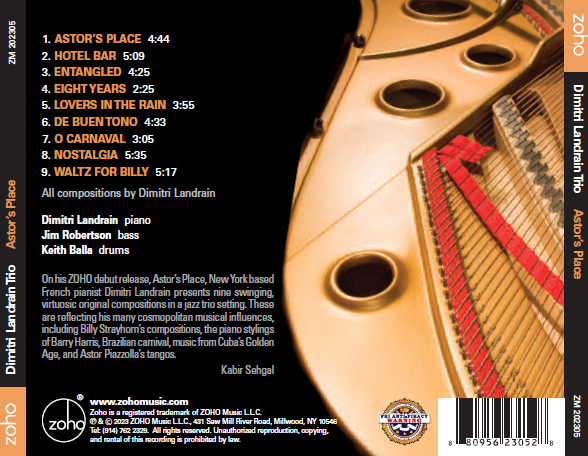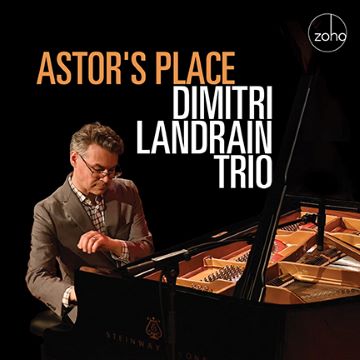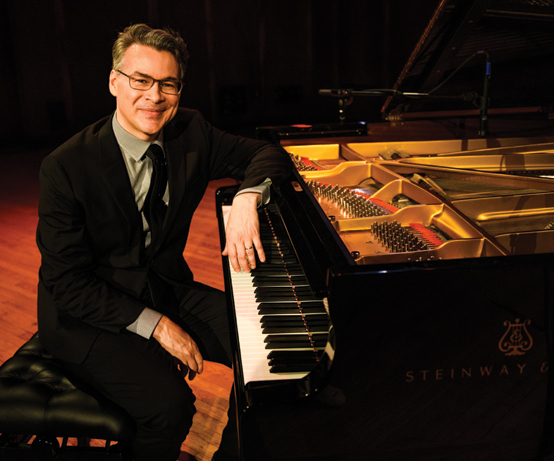THIS WILL PUT YOU IN PIANO HEAVEN
Astor’s Place is a gorgeously rendered album that reveals the genius of Dimitri Landrain. The acclaimed French composer and pianist based in New York City has traveled the world and found inspiration among his adventures. This album is a tribute to all those wonderful musical worlds he’s experienced. This production is well-conceived and -executed. The care and craft that went into making this music is nothing short of exemplary.
Over the course of nine personal and internationally-influenced original compositions, Astor’s Place takes listeners on a biographical and cultural journey. Dimitri began studying classical piano at age eight and soon became immersed in improvisation, jazz, and swing. After gigging in Paris throughout his teenage years, he moved to the US after earning a scholarship and eventually attended the Berklee College of Music.While at Berklee, he was offered to tour as a bandleader on a cruise line. Landrain jumped aboard and traveled the world, seeing various port cities and learning about the music of the Americas. Among the places he visited were Brazil and Argentina. “I vividly remember the unique and rich music of the Carnival and the harmonic and melodic language of Jobim and Gilberto Gil,” he says. Joining Landrain on this musical adventure are talented artists Jim Robertson (bass) and Keith Balla (drums).
Each song on this album is a stop in Landrain’s life journey: his experiences in fascinating places, and his inspirations to write music that will linger with you for days. The first (and title) track, “Astor’s Place,” is indeed a tribute to Astor Piazzolla. capturing the spirit and passion of tango, especially the intensity and drama by alternating relentlessness and relief.The progression is familiar to “Libertango” with a minor key and a bass pedal point that supports the upper register harmony. The B section supplies the relief followed by a thoughtful piano solo leading into an inspired drum solo. Balla displays an incredible versatility throughout the album, weaving a tasteful variation of styles and grooves to perfectly color and support Landrain’s compositions, while still interacting emotionally with the trio.“Hotel Bar” is an homage to the golden age of Cuban music, which Landrain learned about through Buena Vista Social Club. I particularly love the warmth and the groove of the old fashioned songs, boleros, and rumbas, made for dancing. This song has rich block chords paired with arpeggios and tensions which add drama to the melodic line. It’s also in this song that we hear the influence of Barry Harris, as Landrain regularly attended Harris’s workshops in NYC. In particular, the block chords are voiced with 5-note harmonizations with a b6 diminished as a passing chord. In other words, one jazz pianist celebrating another. Robertson’s bass solos throughout the album are effortless and melodic. He so easily provides strong counter- melodies to the piano while being in osmosis with Keith’s drumming. The trio interaction is always seamless: subtle, intimate, sensitive, like an uninterrupted conversation between three friends.
“Entangled” is a mixture of musical styles: rumba, beguine, tango. Landrain’s piece reflects the complexities of relationships with their ups-and-downs and entanglements.Landrain wrote “Eight Years” as the first song for this album. He rewrote it several times while he was searching for the overarching concept of the album. And well, it took about eight years to find it. The piece is decidedly samba in the key of Ab minor. Despite being cast in arguably difficult key, the piece has levity.“Lovers In The Rain” has the feel of a quintessential jazz ballad because it’s soft, emotive, intimate, and lyrical. Landrain’s piece is an allusion to Michel Legrand, a French composer. The piece has a bittersweet vibe, as if two lovers seeing each other for the last time in the rain.“De Buen Tono” is a feel good, nod-along piece. It evokes the elegance and suaveness of a couple dancing to a rumba groove. “It brings me back to the feeling of ease from a simpler life and cherishing every moment,” reflects Landrain. Wishing for a more stable, less complex time may be a flight of fancy, but this song transports the listener to a lush landscape of bliss and beauty.“O Carnaval” is a stirring tribute to Brazilian samba music that’s danced in Rio’s “Sambadrome” during Carnival. The well-structured tune follows that of a popular tune: verse, pre-chorus, chorus. “I can imagine a huge choir, hundreds of voices singing over percussion to the theme ’˜O, Car-Na-Val’ as they are dancing down the Sambadrome,” says Landrain.Nostalgia puts the album into an introspective gear. It’s Landrain’s reference to Piazzolla’s well-known number “Oblivion.” Both songs have a similar harmonic motion, and both pieces share an intensity and sentimentality.
“Waltz for Billy” is the final salvo of the production. It’s an homage to Billy Strayhorn, who had a terrific talent for using tensions and chromaticism over chord progressions. With this song, Landrain is journeying into Billy and Duke Ellington’s musical world.
Tracks 2 to 5 recorded at the Centennial Memorial Temple,New York, NY on April 12th, 2022Sound Engineer: PJ RobertsTracks 1, 6 to 9 recorded at: Oktaven Studio,Mt. Vernon, NY, on November 8th, 2022Sound Engineer: Ryan Streber, Edwin Huetmixed and mastered by Ryan Streber, Oktaven Studio
photos by Manish Gosaliaart by Jack Frisch


